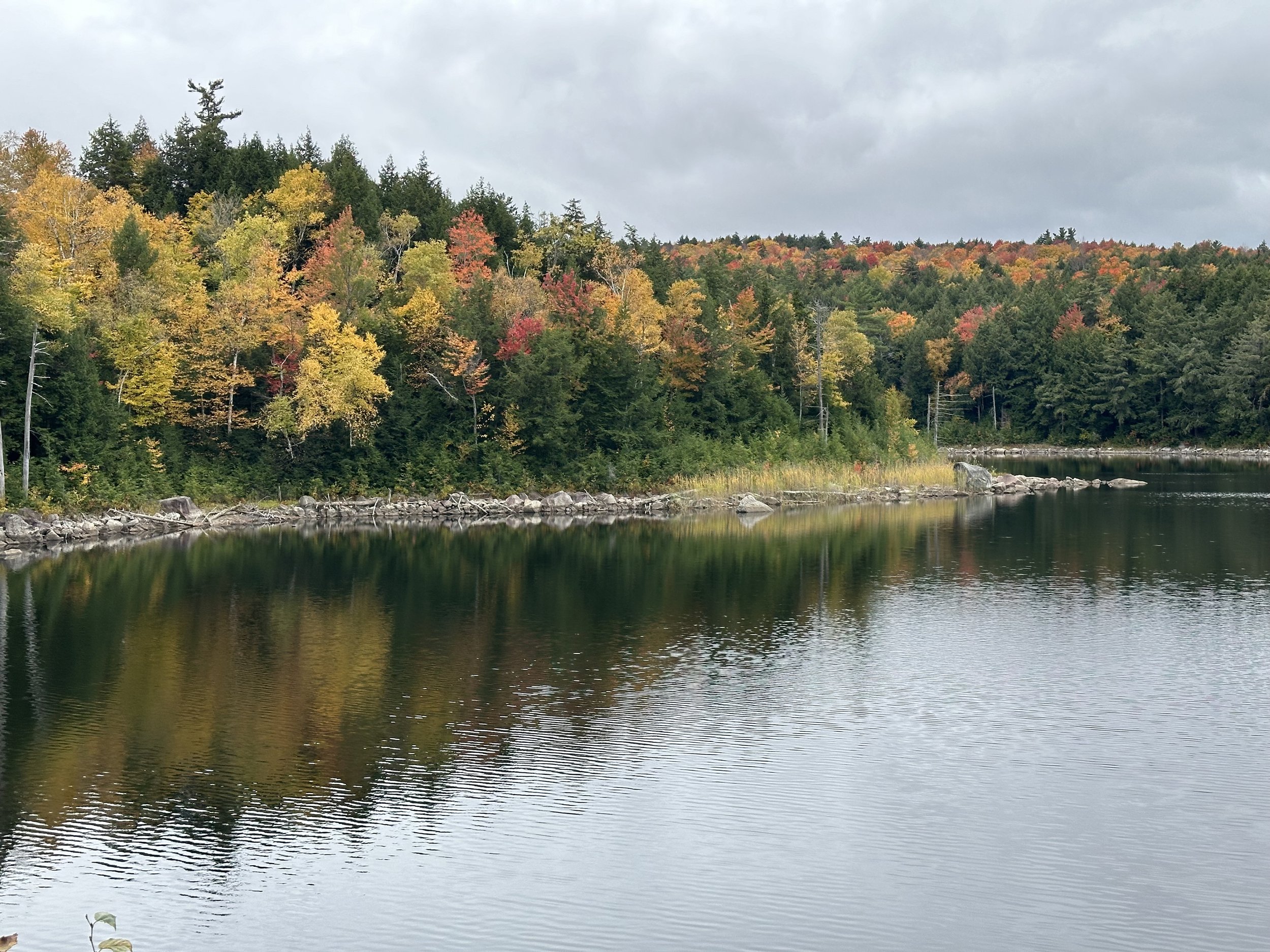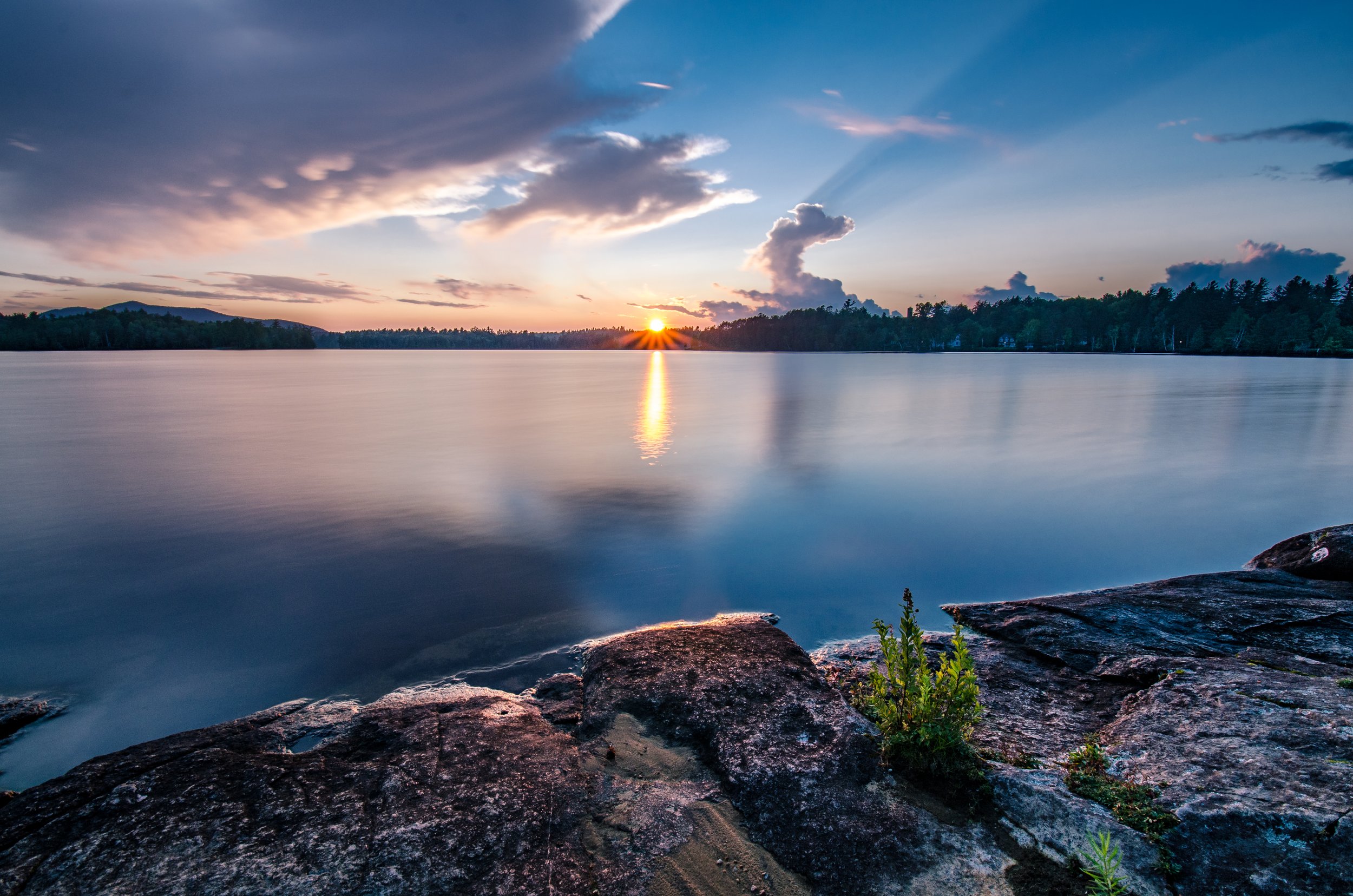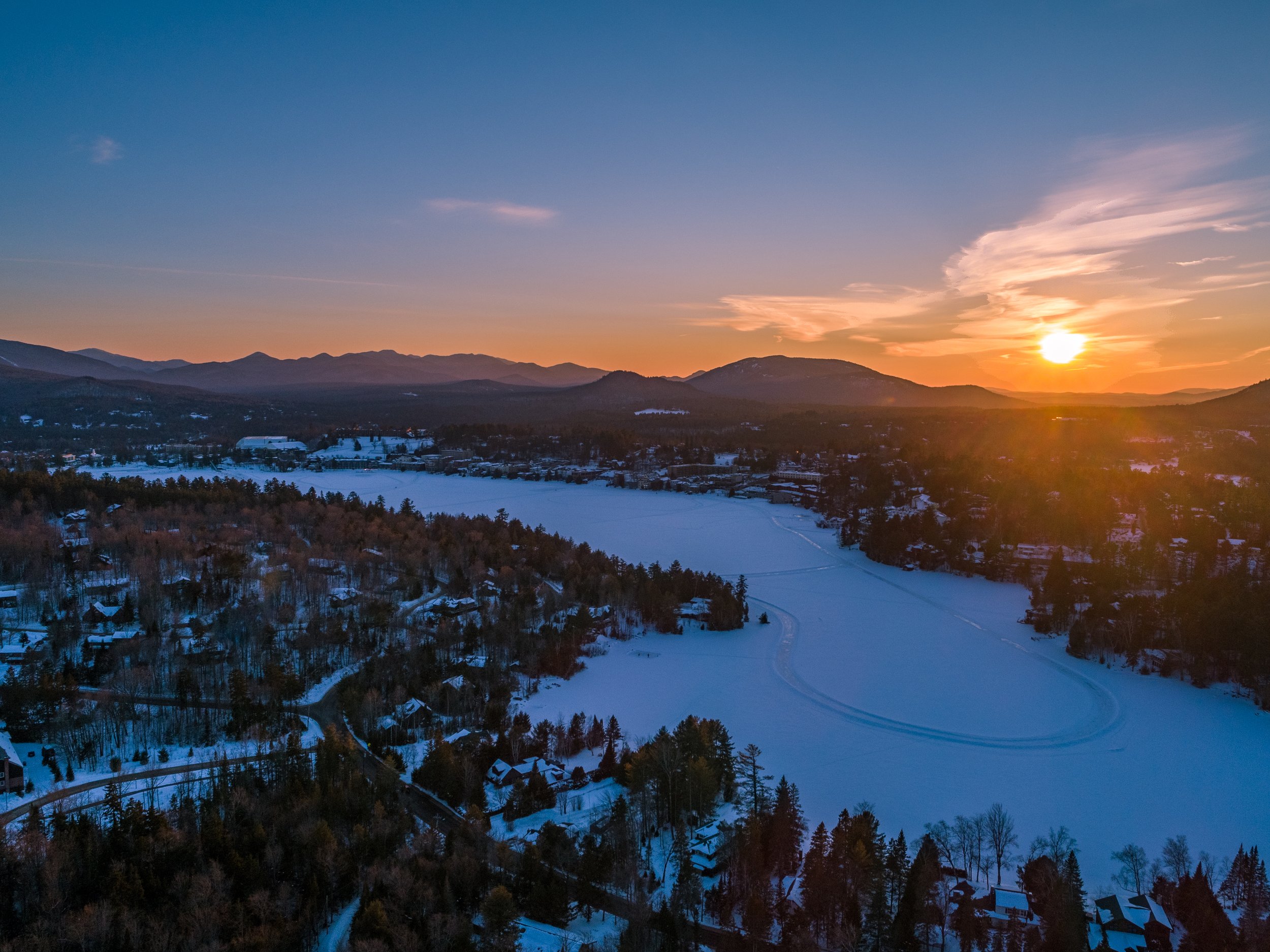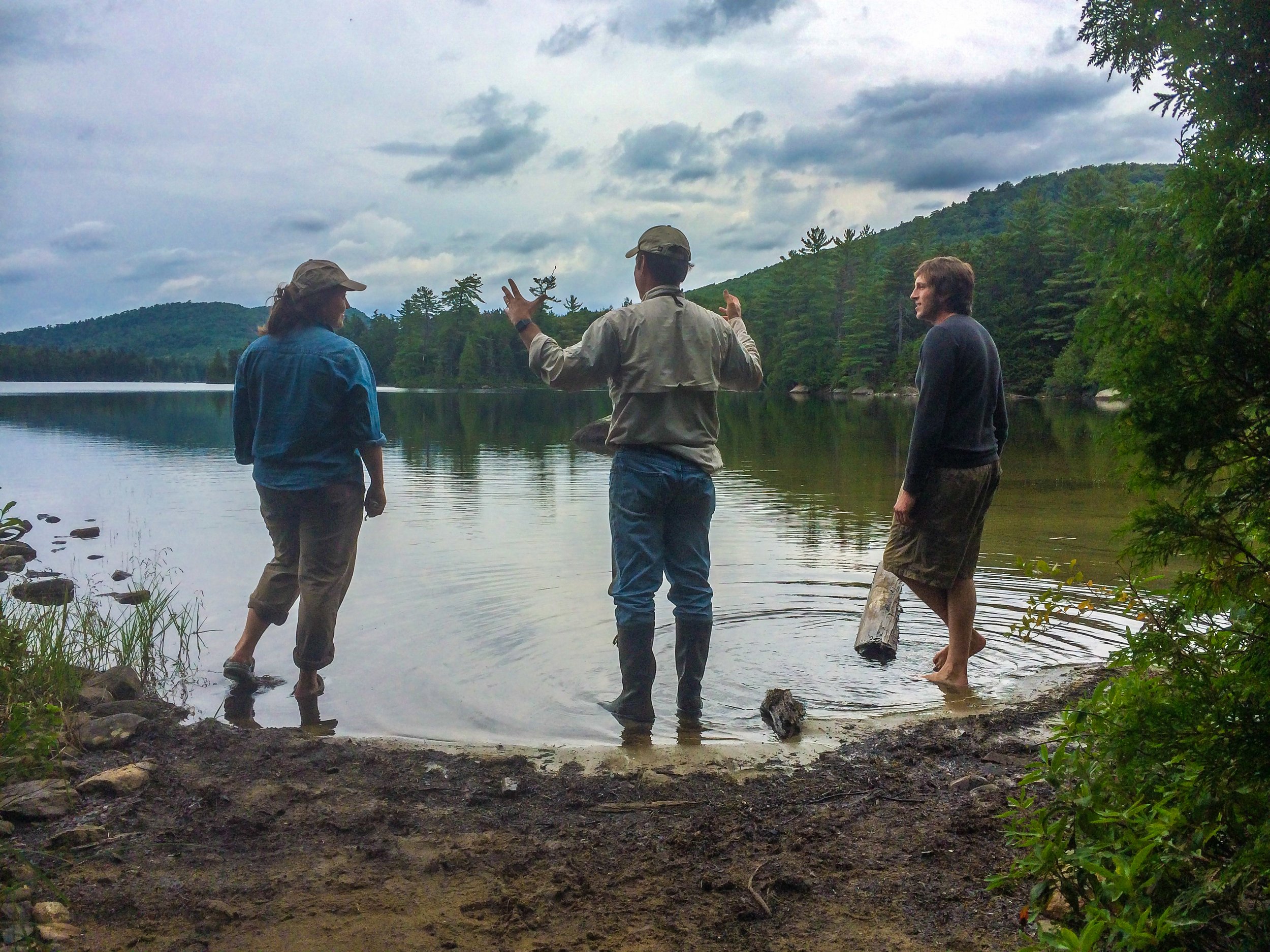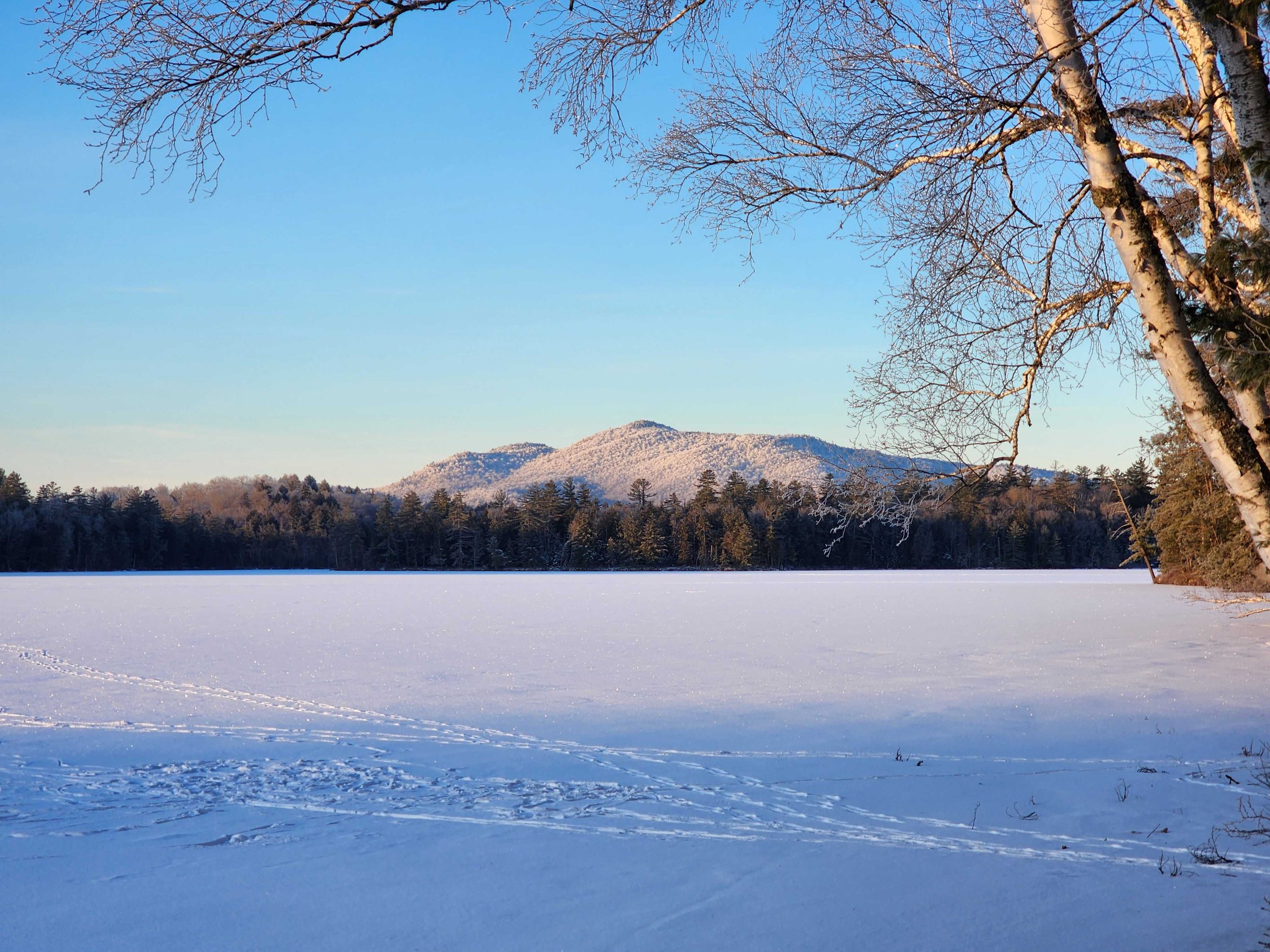
Climate Change Research
Climate Change in the Adirondacks as of 2024

Winters in the Adirondacks have become shorter and milder, while summers are growing longer and hotter from 1900 to 2024. Long-term temperature and precipitation data from weather stations in Dannemora, Tupper Lake, and Indian Lake reveal these trends over several decades. The region is warming at a faster rate than the global average, though the pace varies depending on the time frame analyzed. For more information, review the Adirondack Climate Report below.
Paul Smith’s College has been studying phenology since 1990.

Phenology is the study of seasonal behavior in plants and animals; when they sprout, migrate, flower, or breed, and how climate affects them. Students, faculty, and researchers have gathered extensive data on various natural phenomena, including ice-out and freeze dates on Lower St. Regis Lake, robin migration patterns, salamander migration, the blooming of red maples, and other significant ecological events.
The Adirondack Watershed Institute staff have contributed to this ongoing research project, showcasing one of the many ways Paul Smith’s College is actively working to deepen our understanding of how climate change impacts the natural world. Learn more about this important work by visiting the link below.
Climate Change Publications
Curt Stager & Mary Thrill.
The Nature Conservancy
Megan Tremblay, Curt Stager, Jeannine-Marie St-Jacques, Skylar Murphy, Matthew Peros, Brian S. Carl.
PLOS One
Curt Stager, Brendan Wiltse, Skylar Murphy
PLOS Climate
Sapna Sharma, Alessandro Filazzola, Thi Nguyen, M. Arshad Imrit, Kevin Blagrave, Damien Bouffard, Julia Daly, Harley Feldman, Natalie Felsine, Harrie-Jan Hendricks-Franssen, Nikolay Granin, Richard Hecock, Jan Henning L’Abée-Lund, Ed Hopkins, Neil Howk, Michael Iacono, Lesley B. Knoll, Johanna Korhonen, Hilmar J. Malmquist, Włodzimierz Marszelewski, Shin-Ichiro S. Matsuzaki, Yuichi Miyabara, Kiyoshi Miyasaka, Alexander Mills, Lolita Olson, Theodore W. Peters, David C. Richardson, Dale M. Robertson, Lars Rudstam, Danielle Wain, Holly Waterfield, Gesa A. Weyhenmeyer, Brendan Wiltse, Huaxia Yao, Andry Zhdanov & John J. Magnuson
Scientific Data
Brendan Wiltse, Graham Mushet, Andrew Paterson, & Brian Cumming
Journal of Paleolimnology
PLOS ONE
Curt Stager, Brendan Wiltse, Brian Cumming, Timothy Messner, Joshua Robtoy, & Sidney Cushing
Michale Glennon, Stephen Langdon, Madeleine Rubenstein, & Molly Cross
PLoS One 10(4): e0224308
Michale Glennon, Stephen Langdon, Madeleine Rubenstein, & Molly Cross
PLoS One 14(8): e0220927
J. Curt Stager, Brendan Wiltse, Brian Cumming, Thomas Holsen, Jonathan Stetler, Corey Laxson, Cristina Marcillo, & Donald Charles. 2019.
Lake and Reservoir Management, 35:208-223
J. Curt Stager, Brendan Wiltse, J. Bradford Hubeny, Eric Yankowsky, David Nardelli, & Richard Primack. 2018.
PLoS One, 13:e0191755

